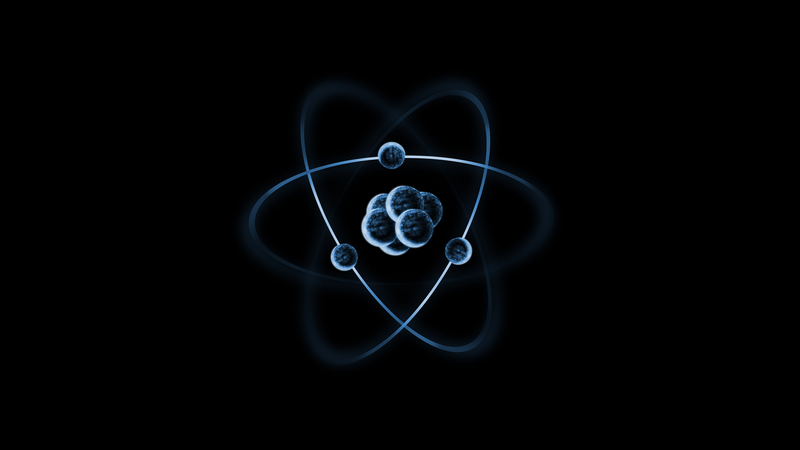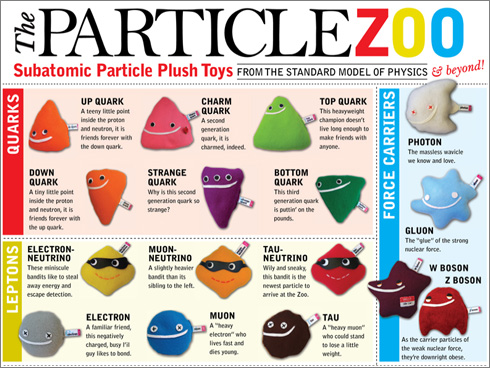What are the Different Kinds of Subatomic Particles?
What if I told you there is more to matter or rather atoms than just electrons, protons and neutrons??
There are two main categories of subatomic particles - Fermions and Bosons. Fermions are the particles we think of as "stuff" - leptons like the electron, neutrino, and cousins, and quarks like the up quark and others in its sizable family. Gauge bosons are the particles that mediate the four fundamental forces of nature - the weak and strong nuclear forces, electromagnetism, and gravity. These include the familiar photon, and its far less-frequently-seen cousins, the W and Z bosons, gluons, and (physicists expect) the graviton, the much-sought-after particle thought to mediate gravitational interactions.
It is important to understand the difference between subatomic particles and fundamental particles. Fundamental means that the particle has no smaller constituents; it is fundamental. Not all subatomic particles are fundamental, though all known fundamental particles are subatomic, meaning smaller than atoms. For example, protons and neutrons, subatomic particles that make up the atom, are composite particles rather than fundamental ones, being constituted out of still-smaller quarks and gluons. Exotic particles like the tau neutrino or muons are subatomic because they are smaller than atoms, but it's valuable to remember that these are not part of the atoms that make up visible structures in our universe.
Subatomic particles are so numerous and varied that physicists have used
the term "particle zoo" to describe them. In the domain of leptons,
there are 3 types of electron - electron, muon
and tau - 3 types of neutrino, and their antiparticles, making 12
leptons.
There are 4 known gauge bosons - the photon, W and Z bosons, and gluon. Two additional bosons, which almost certainly exist, but have not yet been observed, include the Higgs boson and the graviton. This brings the total of fundamental particles to 18. Add in the top, bottom, up, down, strange, and charm quarks, and their antiquarks, and you have 30 fundamental, subatomic particles.
However, that's not all. A proton or neutron is made up of three quarks. These include two of either up and down quarks, and one of the remaining quark, stuck together with gluons in the nucleus of the atom. However, this is not the only possible quark configuration - just the most stable. If you could somehow pick up fundamental particles at will and stick them together in arbitrary configurations, you could create thousands of new subatomic particles.
Hundreds of these subatomic particles have actually been observed in particle accelerator experiments. They include mesons, which have only two quarks, and hadrons, which have three like protons and neutrons. There are also the so-called glueballs or gluonium, subatomic particles composed of nothing but gluons, and the suspected tetraquark, a species of subatomic particle that would be composed of four quarks. Do pentaquarks and beyond exist? Maybe so, but to find them would require experimental apparatus far in excess of our current best.
There are 4 known gauge bosons - the photon, W and Z bosons, and gluon. Two additional bosons, which almost certainly exist, but have not yet been observed, include the Higgs boson and the graviton. This brings the total of fundamental particles to 18. Add in the top, bottom, up, down, strange, and charm quarks, and their antiquarks, and you have 30 fundamental, subatomic particles.
However, that's not all. A proton or neutron is made up of three quarks. These include two of either up and down quarks, and one of the remaining quark, stuck together with gluons in the nucleus of the atom. However, this is not the only possible quark configuration - just the most stable. If you could somehow pick up fundamental particles at will and stick them together in arbitrary configurations, you could create thousands of new subatomic particles.
Hundreds of these subatomic particles have actually been observed in particle accelerator experiments. They include mesons, which have only two quarks, and hadrons, which have three like protons and neutrons. There are also the so-called glueballs or gluonium, subatomic particles composed of nothing but gluons, and the suspected tetraquark, a species of subatomic particle that would be composed of four quarks. Do pentaquarks and beyond exist? Maybe so, but to find them would require experimental apparatus far in excess of our current best.


Comments
Post a Comment